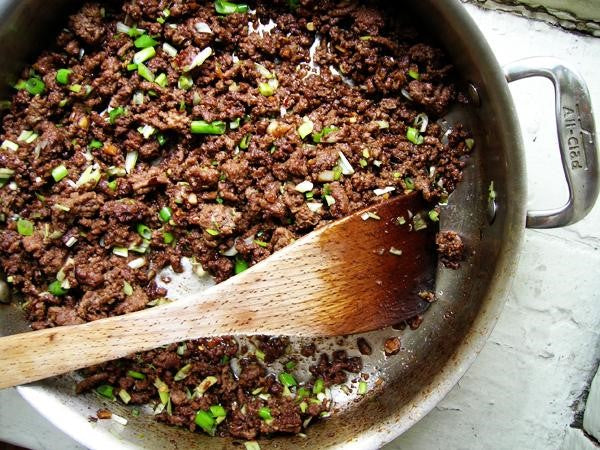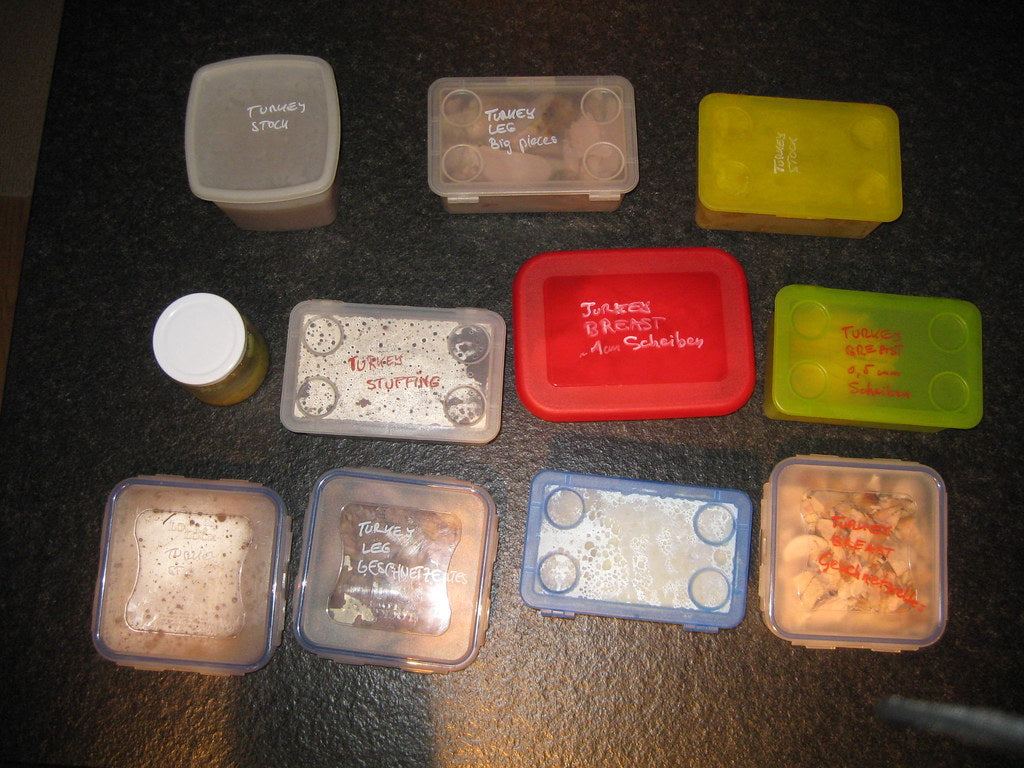It’s a topic no one is happy to re-visit, but it’s high time we started talking about preparing for job loss again.
This is a hurdle many of us thought we’d cleared back in May, but with the resurgence of COVID-19 in the Southern and Western US, economists are again predicting a tough road ahead.
Federal Reserve Governor Lael Brainard said, “The earlier-than-anticipated resumption in [economic] activity has been accompanied by a sharp increase in the virus spread in many areas. Even if the virus spread flattens, the recovery is likely to face headwinds from diminished activity and costly adjustments in some sectors, along with impaired incomes among many consumers and businesses.”
In other words, as this economic lull stretches even further and federal stimulus money runs out, there’s an ever-growing possibility that more people will lose their jobs.
If you haven’t yet, there’s still time to prepare. We recommend that you start in your cupboards—Americans spend nearly 10% of their income on food. Finding ways to get that bill reduced can carry you through a personal financial crisis.
Read on for pro tips on how to save TONS of money by multiplying your meals.
The Art of the Meal Multiplier
Tell me if this has ever happened to you: You enter your favorite grocery or big box store (I’m looking at you Costco!) with a list and a general idea of how much you plan to spend. You pick up what you came to get and maybe grab an extra little item or two. You pull up to the checkout stand and the total you see on the register is a wee bit higher than you planned on spending.

You exit the store feeling frustrated and defeated. How does this happen every time!
If you’re anything like me, keeping your grocery bill down is an ongoing challenge. But after years of working in the emergency supply industry, I’ve learned a surefire trick that will get you more food for less money. I call it the “gentle art” of meal multiplying.
Meal Multiplier Case Study: Consider the Taco…
To illustrate what I mean, consider the taco. Tacos are easy to make at home—one of the reasons so many families across America have frequent “taco nights.” All you have to do is brown hamburger and add a convenient seasoning packet. Grate some cheese, pick up a box of taco shells, and you’re in business.If you’re trying to feed a large family, however, the ground beef is easily the most expensive part of the meal; these days it costs somewhere in the neighborhood of $4.99/ lb. If you are feeding teenagers you’ll need several pounds, and that runs into real money.
With the meal multiplier method, there’s no need to buy all that beef. Instead, reduce the amount of beef you purchase by half or even a third and supplement with hearty, protein-packed filler. I know it sounds a little weird, but there are products designed specifically for this purpose. They taste great and are every bit as healthy as beef.

Here’s how taco night would look using a meal multiplier.
Instead of purchasing three pounds of ground beef for your dinner—a totally of $15.00 or so—purchase:
- A pound of beef
- Black or pinto beans (a 15 oz. can is about a pound)
- As many servings of plant protein (TVP) as there are mouths to feed. (You can find TVP at many big box stores like Walmart).
To multiply your meal, simply brown the beef and prepare the plant protein. Once the meat is browned, add the prepared protein and beans (rinsed). Add your taco seasoning as per the instructions and you’re all set!
What you’ll end up with is four or more pounds of delicious taco filling at about half the price. Boom! You now have a few additional dollars in your grocery budget, just like that.
Here’s how it breaks down from a cost standpoint.

The point of this exercise is to create more food using acceptable, less expensive substitutes without sacrificing nutrition or taste. Watering down the soup does not count and is not recommended. But if you must create additional soup, add a few cups of water along with some pearled barley or amaranth. (As an aside, amaranth is an underutilized soup ingredient. It will give your broth a beautiful nutty flavor while also adding some nutrients like iron.)
Other Ideas for Multiplying Meals: Leftovers, Starches, and Food Storage
LEFTOVERS
Another way to make your budget go farther is to be imaginative with your leftovers. One of my favorite strategies is to get a whole frozen chicken. Depending on sales, etc., a whole roasting chicken costs between $5-$8. If you play your cards right, you can make that one chicken last three meals.
- First serve it carved like a turkey with mashed potatoes and green beans.
- On the second night, cut any bits of leftover chicken into small chunks and use in a casserole or anything that requires cooked chopped chicken.
- Lastly, you can boil the carcass for stock and make a very hearty chicken noodle soup.
Similarly, if you have any extra roast beef from your Sunday roast, use it to make a simple stew and serve it over rice.

STARCHES
Starches make great meal extenders because they are filling and cheap: things like mashed potatoes, tortillas, cracked wheat, and rice. Many foods go well on a bed of rice. If you need to watch your blood sugar, substitute brown rice, which has a lower glycemic index. Being a whole grain, brown rice is higher in protein and dietary fiber than plain white rice.
FOOD STORAGE
My family made use of this method often when we went jobless and had to subsist on food storage for 18 months. We managed to stretch our meals by adding our food storage oatmeal (not a starch, but a great filler for meals like pancakes!) and rice to meals. The great thing is that because we’d already purchased our food storage, it was free to us! We could just set and forget it without worrying about expiration dates, and then use it as we needed. Some of our cans and pails lasted us years.
There are Limits to Meal Multiplying
Now, it is possible to take this concept too far. Breadcrumbs are a common ingredient in meatballs, homemade sausage, and meatloaf, but you don’t want to add so many breadcrumbs that your meatballs taste like soggy bread. Wartime Britain had a lot of jokes about sausages turning into toast when you fried them. This should not be a goal, but a cautionary tale.
When you use these methods to make the expensive ingredients in your family dinners go further, you will automatically be making better food choices in addition to saving money. You can spend the money you save to purchase fresh fruits and vegetables, that elusive category of foods that everyone says they want to eat more of but never actually do so.
If you want to, you can save even more by purchasing frozen vegetables. A medium-sized package of peas and carrots is only $1 at my local grocery store and has the added benefit of including carrots that have already been peeled and chopped.
If you’re skeptical or concerned that your family wouldn’t actually eat tacos containing beans and plant protein, that’s fair. I didn’t think my family would actually enjoy taco filler the first time I made it. Now, though, this is one of my family’s favorite meals. They actually complain if there is too much real meat in the tacos because they enjoy the other parts so much.
If after reading this article you still doubt that you’d like to have anything to do with this kind of grocery bill management, I challenge you to stretch just one meal accordingly and see how you like it. You might be surprised.


1 comment
Jackson Carter
Drying is the critical factor in preservation of food products. The removal of moisture helps prevent bacterial activity and spoilage. Salt can be used to accelerate the removal of water and hence its widespread use as a traditional preservative. Modern day methods of water removal include freeze drying which will both remove the water and significantly reduce the weight of the food. Smoking the meat imparts extracts from the smoke (phenols, etc.) that helps to retards the growth of spoilage bacteria. Today preservatives are typically added to retard bacterial growth .
https://healthandfitness2020.com/survival-food-at-costco-how-to-make-the-ultimate-survival-food/